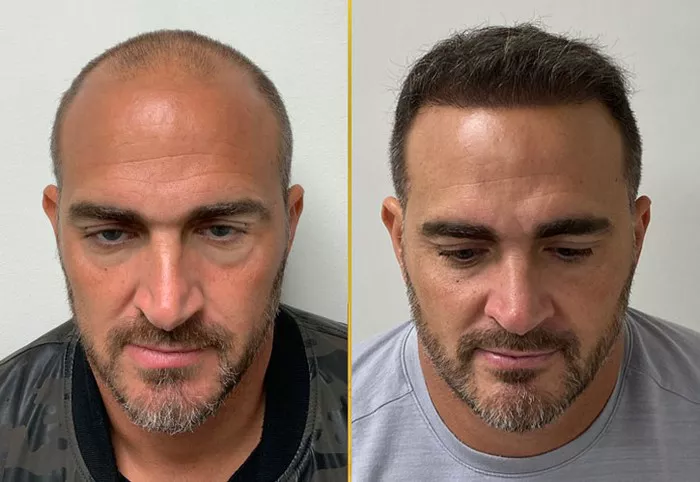Hair transplants are a popular and effective solution for those dealing with hair loss. However, the recovery process is crucial for ensuring the success of the procedure and the longevity of the results. One of the most common questions patients ask is when they can resume their exercise routine after a hair transplant. In this comprehensive guide, we will explore the post-transplant recovery timeline, the importance of rest, and the gradual reintroduction of physical activities to ensure the best possible outcomes.
Understanding Hair Transplant Recovery
A hair transplant involves moving hair follicles from areas of the scalp with dense hair growth to areas with thinning or balding hair. The procedure is typically performed under local anesthesia and can take several hours, depending on the number of grafts being transplanted. Post-surgery, the scalp needs time to heal and the transplanted follicles need to establish themselves in their new locations.
Importance of Post-Transplant Rest
After a hair transplant, it is crucial to prioritize rest and follow the post-operative instructions provided by your surgeon. The initial recovery period is critical for several reasons:
Healing of the Scalp
- Incision Healing: The incisions made during the transplant need time to heal properly. Premature physical activity can increase blood pressure and heart rate, potentially causing bleeding or dislodging the newly transplanted grafts.
- Swelling Reduction: Swelling is a common side effect after a hair transplant. Resting and avoiding activities that increase blood flow to the head can help reduce swelling and discomfort.
Establishment of New Follicles
- Graft Survival: The first few weeks after the transplant are crucial for the survival of the new hair follicles. Physical stress can disrupt the healing process and reduce the success rate of the transplant.
Preventing Complications
- Infection Risk: Engaging in physical activity too soon can increase the risk of infection. Sweating and friction from exercise can introduce bacteria to the healing scalp, leading to potential complications.
Post-Transplant Exercise Timeline
The timeline for resuming exercise after a hair transplant varies depending on the individual and the type of procedure. However, here is a general guideline to follow:
Immediate Post-Transplant Period (0-3 Days)
- Complete Rest: For the first three days, complete rest is recommended. Avoid any physical activity that increases heart rate or blood pressure. This includes light exercises like walking.
- Head Position: Keep your head elevated to reduce swelling. Use extra pillows when lying down.
- Avoid Touching: Do not touch or rub the treated area. Follow all post-operative care instructions provided by your surgeon.
Early Recovery Period (4-7 Days)
- Light Activity: After the first week, you can gradually introduce light activities like gentle walking. However, avoid any strenuous exercise or activities that cause excessive sweating.
- Protect the Scalp: Wear a breathable hat or cap to protect the scalp from sunlight and debris when going outside.
- Continue Care: Continue following post-operative care instructions, including using prescribed medications and scalp treatments.
Mid-Recovery Period (2-3 Weeks)
- Moderate Activity: By the second or third week, you can begin engaging in moderate activities like light jogging or cycling. Avoid high-intensity exercises that cause heavy sweating or increase blood pressure.
- Monitor Scalp: Pay attention to any signs of discomfort, swelling, or bleeding. If you experience any issues, stop the activity and consult your surgeon.
Late Recovery Period (4-6 Weeks)
- Gradual Increase: By the fourth to sixth week, you can gradually increase the intensity of your workouts. Start with lower-intensity activities and slowly progress to more vigorous exercises.
- Avoid Contact Sports: Continue to avoid contact sports or activities that pose a risk of impact to the scalp, such as basketball, soccer, or martial arts.
- Protective Measures: Use a headband or sweatband to absorb sweat and prevent it from dripping onto the scalp.
Full Recovery (8+ Weeks)
- Resume Normal Routine: By eight weeks, most patients can resume their normal exercise routine, including high-intensity workouts and contact sports. However, it is still important to monitor the scalp for any signs of irritation or discomfort.
- Ongoing Care: Continue to follow good hair care practices, including regular washing, conditioning, and protecting the scalp from environmental factors.
Precautions and Tips for Post-Transplant Exercise
To ensure a smooth recovery and the best possible results, follow these precautions and tips:
Stay Hydrated
- Drink Water: Stay hydrated before, during, and after exercise to support overall health and aid in the healing process.
Avoid Overheating
- Cool Environment: Exercise in a cool, well-ventilated environment to avoid overheating and excessive sweating.
- Short Sessions: Break your workouts into shorter sessions to avoid prolonged periods of elevated heart rate and blood pressure.
Use Proper Equipment
- Breathable Clothing: Wear breathable, moisture-wicking clothing to keep the scalp dry and comfortable.
- Head Protection: Use a breathable headband or sweatband to absorb sweat and prevent it from dripping onto the scalp.
Monitor Your Body
- Listen to Your Body: Pay attention to any signs of discomfort, swelling, or bleeding. If you experience any issues, stop the activity and consult your surgeon.
- Rest When Needed: Take breaks as needed and avoid pushing yourself too hard, especially in the early stages of recovery.
Conclusion: Gradual and Safe Return to Exercise
In conclusion, the key to a successful hair transplant is a gradual and safe return to exercise. By following the post-operative care instructions provided by your surgeon and taking the necessary precautions, you can ensure the best possible outcomes and enjoy the full benefits of your hair transplant. Whether you are a fitness enthusiast or just starting to incorporate exercise into your routine, prioritize your recovery and listen to your body to achieve the best results.


